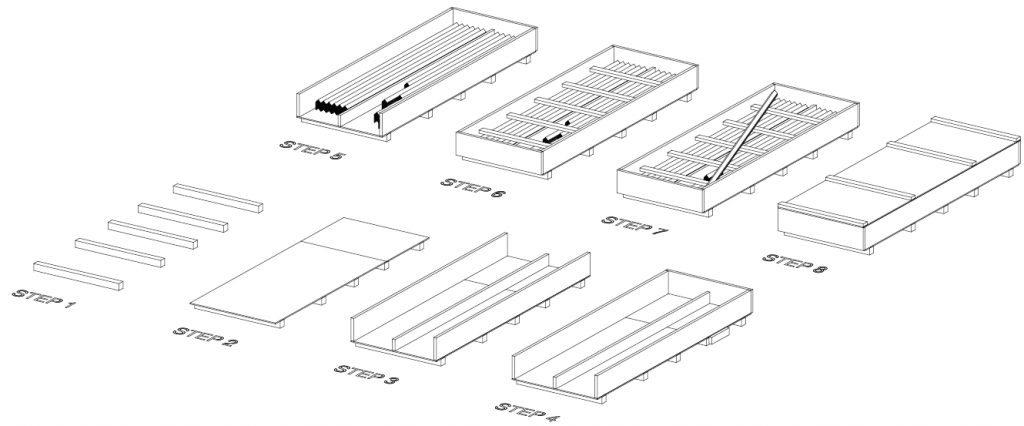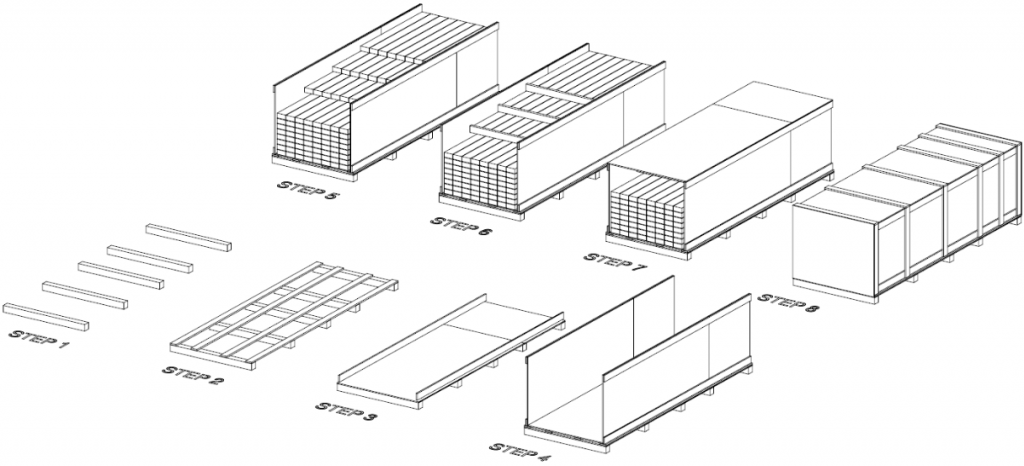Drafting our Way out of a Sticky Ship-uation
Using detailed shop drawings to secure critical transport
If you have a project where you need a custom crate drawn, or you would like to see what size crating may be required for your project, reach out to us to see how we can help. If you have a typical crate design but would like to formalize the drawings and/or the building process for your shop we are willing and able to help out there as well.
The Opportunity
We recently completed a very unique project in our fabrication division that required us to design and build custom crates to move materials from Michigan to Hawaii, which was no small feat! We leveraged our drafting team at MP Drafting to design these crates and come up with a solution that allowed for safe shipping on both truck, boat and plane.
The project was a custom high end retail shop in Hawaii that wanted a very specific look for their new flagship store. This required a system that could handle 1-5/16” glass and be able to support very large glass lites. The store utilizes custom stone that wraps parts of the storefront system and the remainder that was exposed is cladded in custom painted aluminum cladding.
The main challenge was to take the Tubelite E34000 material that was used for the storefront framing, fabricate it K.D. (Knock Down), box it up and ship it on a boat to the island.
The second challenge was to box up the cladding pieces and send those on air freight to the same location. The cladding, with its custom paint, took 8 weeks to get fabricated and finished which meant the storefront was already on location and installed which required the expedited shipping.
When researching crate building, we found resources but almost none that covered glazing products such as storefront framing, and definitely none that covered the cladding products. We are sharing these designs with you in hopes that it helps you to see several different methods and allows you to feel more comfortable shipping your materials over long distances. The trend of glazing contractors expanding their geographic areas is a growing one, and having plans for moving materials will help you to be successful at this strategy.
Cladding Crate
The first design we are showing you is the cladding crate. This crate had to be robust enough to withstand being shipped on a truck from Michigan to Chicago where it was loaded on a plane and flown to Hawaii, then trucked to the customer’s facility. We utilized 2×12’s as the sides of the crate to give it stiffness and protect against anyone running into the crate with a forklift. The runners underneath are 4×4’x and provided a very secure footing for the crate.
Due to the length of this crate we did not want anyone picking it up from the ends, and the 4×4’s eliminated this possibility. Each layer of cladding had foam sheets between them, and they were wrapped tight with stretch wrap along the entire length to keep the bundles together. Because we were limited to 125” maximum length and we had some 128” long pieces we designed the crate to have room for angled pieces to be placed.
Storefront Crate
This crate was the largest we ever had to build in our fabrication facility, and it certainly traveled the farthest. This crate was to be shipped via truck to California then loaded onto a boat to be sent to the islands. Due to the cost of shipping we wanted to do everything we could to keep the material in a single crate. With the longest piece we were shipping being 144” we needed the crate to be just over that length. The height ended up being right at 36”, and the overall weight of the crate was just under 2,000 lbs.
We debated the best way to load the extrusions into this box and came up with the following solution. For any sill pieces we pre-installed the glass stops so the overall shape was the same as the verticals and heads. From there we lined the entire box in cardboard, and then used glazing tabs between each component along the entire length. These tabs are a cork material and stick to the extrusions without leaving any residue when removed. This also had the added benefit of creating a tight fit of the material in the box which helped with the overall stability. Knowing the material dimensions, taking into account the width of the tabs as well as how much they compress allowed us to design the crate size accordingly.
Conclusion
Having the ability to draft ideas, revise them, and ultimately come up with an efficient design would have been much more difficult without our team of trained drafters. If you have a project where you need a custom crate drawn, or would like to see what size crating may be required for your project, reach out to us to see how we can help. If you have a typical crate design but would like to formalize the drawings and/or the building process for your shop we are willing and able to help out there as well.




